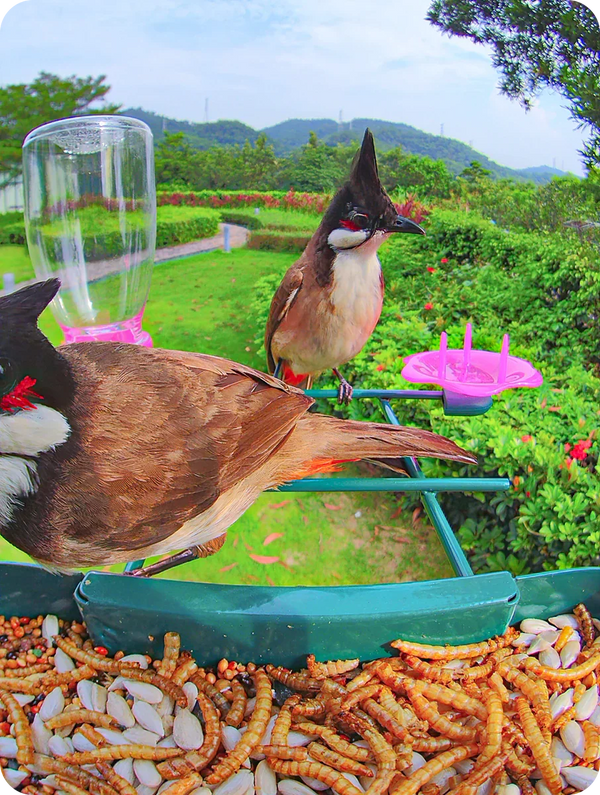Unlock the Secret to Attracting Hummingbirds with the Perfect Feeder!
Hummingbirds are among the most captivating creatures in nature, known for their vibrant colors and incredible agility. These tiny birds play a vital role in pollination, contributing to the health of many plants and flowers in our ecosystems. To attract these beautiful visitors to your garden, hummingbird feeders are essential tools. In this article, we will delve into the world of standing hummingbird feeders, exploring what they are, how they differ from other types, and the best practices for choosing and using them effectively. Whether you’re a seasoned birdwatcher or a beginner, this guide aims to provide you with the knowledge you need to create an inviting space for these delightful birds.

Understanding Standing Hummingbird Feeders
A standing hummingbird feeder is a stationary device designed to hold nectar, attracting hummingbirds for feeding. Unlike hanging feeders, which rely on hooks or branches for support, standing feeders are freestanding and often come with a base that allows them to be placed directly on the ground or on a table. This type of feeder offers several benefits, including increased visibility for the birds and reduced risk of it swinging in the wind. Additionally, standing feeders can be more accessible for refilling and cleaning, making them a practical choice for many bird enthusiasts. Their design not only draws in hummingbirds but also provides an eye-catching feature for your garden.
Choosing the Right Standing Hummingbird Feeder
When selecting a standing hummingbird feeder, there are several key features to consider to ensure you make the best choice for your needs. First, the material of the feeder plays a significant role in its durability and ease of maintenance. Common materials include glass and plastic, each with its own benefits and drawbacks. Glass feeders are often more durable and visually appealing, while plastic feeders are lightweight and less prone to breakage. However, they may not last as long when exposed to harsh weather conditions.
Material and Durability
Glass feeders are generally favored for their aesthetic appeal and sturdiness. They are less likely to fade in color over time and are easy to clean. On the other hand, plastic feeders can be a cost-effective option, especially for those just starting. They are lightweight and portable, making them easy to move around your garden, but be mindful that they may need to be replaced more frequently due to wear and tear.
Design and Functionality
The design of the feeder is crucial for attracting hummingbirds effectively. Tube feeders, which feature long feeding ports, are excellent for accommodating multiple birds at once, while bowl feeders are more straightforward and can be easier to clean. Each design impacts how hummingbirds feed; for instance, tube feeders often mimic the tubular flowers that hummingbirds are naturally drawn to. Consider what type of design would best suit the birds in your area and your personal preferences.
Capacity and Maintenance
Capacity is another essential factor when choosing a feeder. Larger feeders are beneficial if you have many hummingbirds visiting your yard, as they can hold more nectar and require less frequent refilling. However, a larger feeder also means more maintenance, as it can be more challenging to clean. It’s important to strike a balance between size and ease of upkeep, ensuring that your feeder remains clean and filled with fresh nectar to attract the birds.
Optimal Placement for Your Feeder
Once you have selected the perfect standing hummingbird feeder, placement is key to attracting these feathered friends. Ideally, place your feeder in an open area where hummingbirds can easily spot it, preferably near flowering plants that naturally attract them. Consider positioning the feeder in a spot that receives morning sunlight, as this will warm the nectar and encourage the birds to visit. Additionally, providing some shelter nearby, such as shrubs or trees, can help hummingbirds feel safe while they feed. Experimenting with different locations will give you insight into what works best in your garden.
Attracting Hummingbirds: Additional Tips
To make your feeder even more appealing to hummingbirds, use a nectar recipe that closely resembles their natural food source. A simple mix of four parts water to one part white sugar, boiled and cooled, is all you need. Avoid using red dyes or artificial sweeteners, as these can be harmful to the birds. Regularly clean your feeder every few days, especially in warmer weather, to prevent mold and bacteria from accumulating. A clean feeder not only attracts more birds but also keeps them healthy.
Effective Strategies for Attracting Hummingbirds
In summary, choosing the right standing hummingbird feeder and placing it optimally are critical steps in attracting these enchanting birds to your garden. By considering factors like material, design, and capacity, you can select a feeder that meets your needs and enhances your outdoor space. With the right nectar recipe and maintenance routine, you’ll create a welcoming environment for hummingbirds to thrive. So, take action today and enjoy the beauty and wonder of hummingbirds visiting your garden, turning your outdoor area into a lively sanctuary.






commentaires